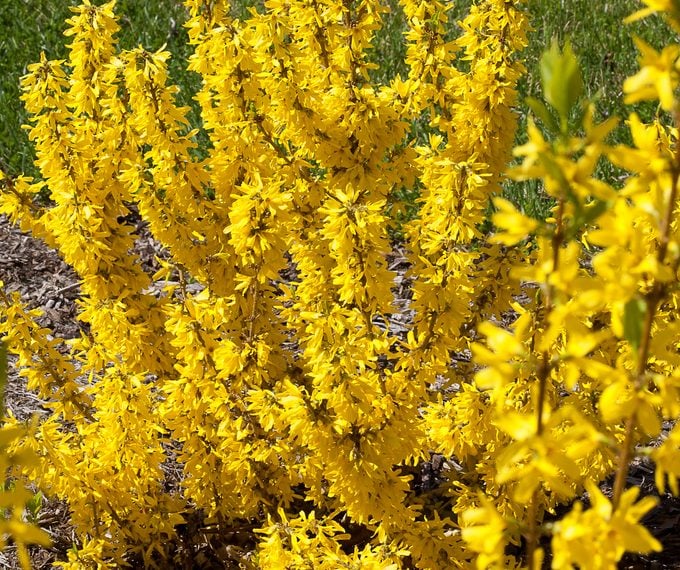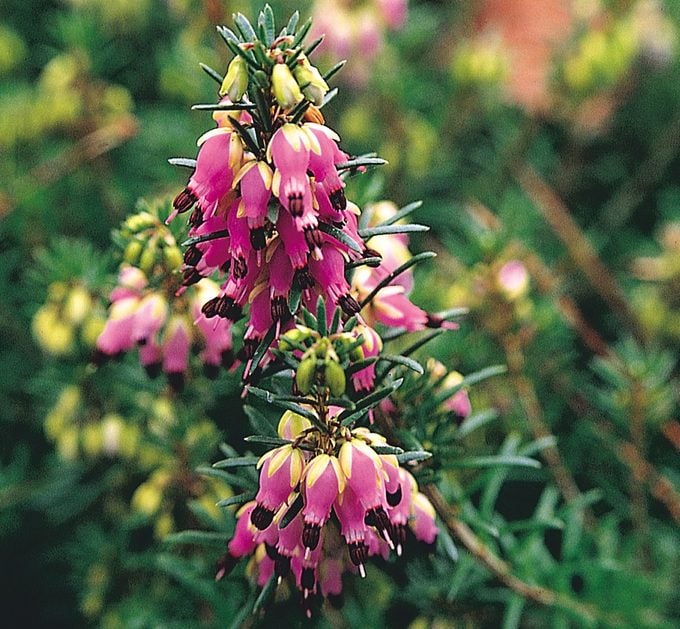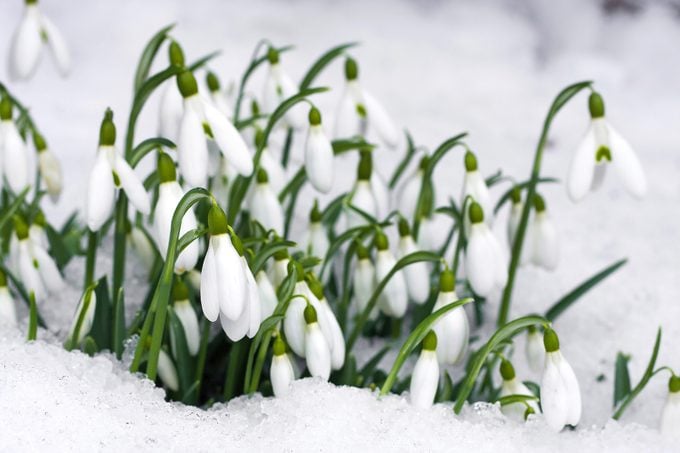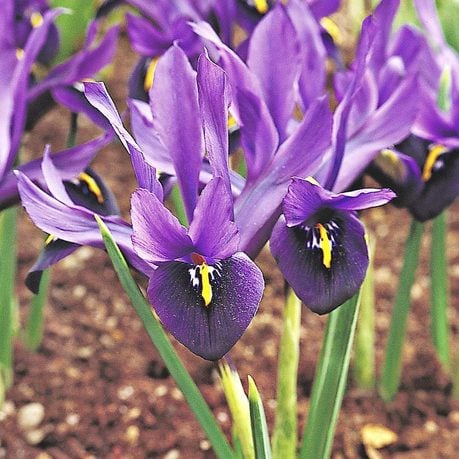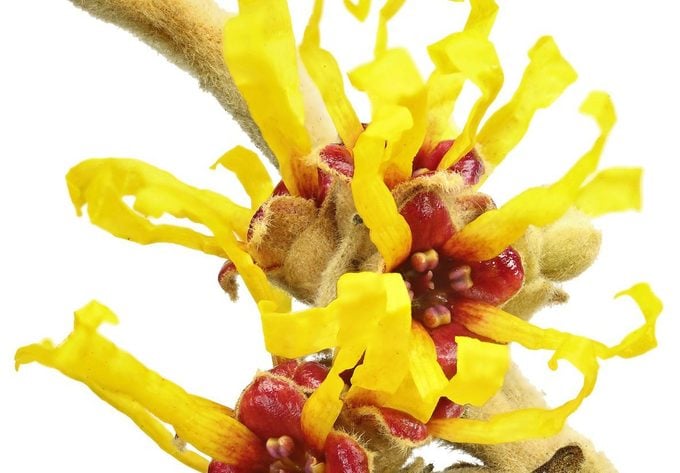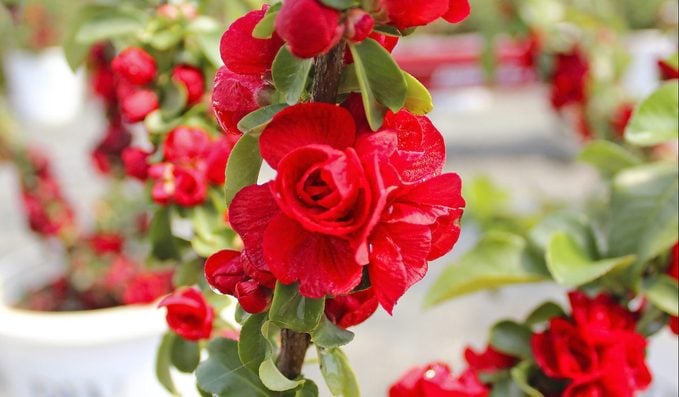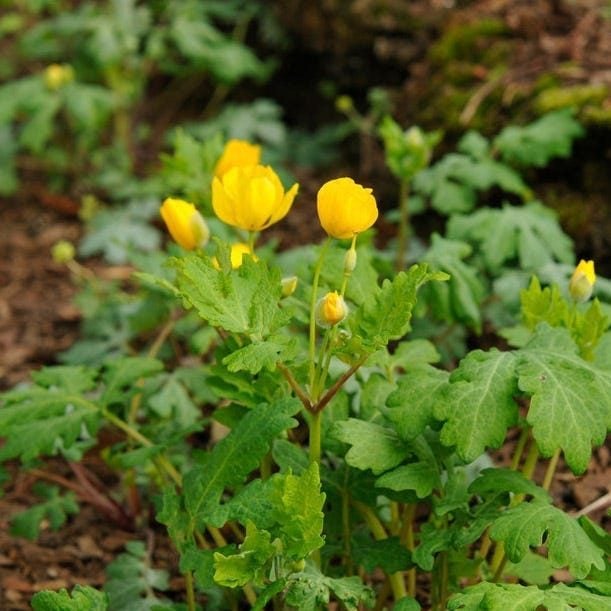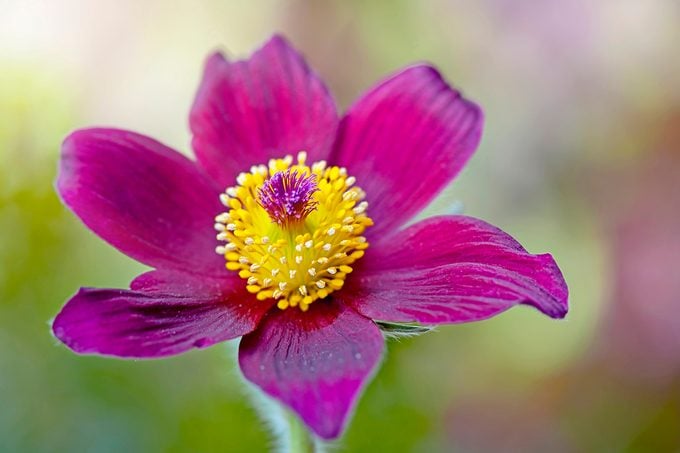22 Early Blooming Spring Flowers for Your Garden
Updated: Nov. 08, 2022
These pretty, early spring flowers are the first to pop up in the garden. That’s what makes hellebores, winter heath and snowdrops so special.
Get the jump on the growing season this year with these pretty early spring flowers that just can’t wait for warm weather. Because these perennial flowers, trees and shrubs are the first to unfurl each spring (or even in late winter!), they’re often past their prime by early summer. Plant other late-blooming perennials nearby so that your garden is alive with colorful flowers later in the year.
Check out the top 10 year-round perennials.
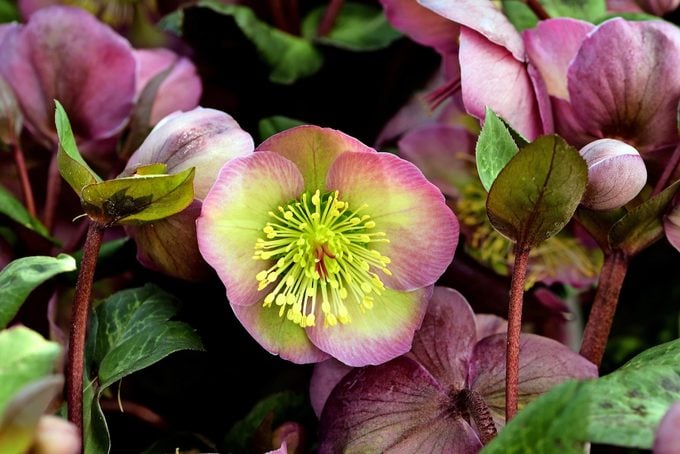
1. Hellebore or Lenten Rose
Helleborus orientalis, Zones 4 to 9
Hellebore’s cup-shaped blossoms are a welcome sight after a long winter. This Easter treat, also known as Lenten rose, springs out of the ground as early as February in moderate winter climates. Ranging from white or pink to rosy purple, the flowers last a few months, usually until March or April. If a snow arrives, don’t fret—these tough blooms will tolerate a dusting. Plant groups of hellebores under backyard trees or shrubs—they thrive in and appreciate the shade. With heights ranging from 1 to 2 feet, this lovely and distinctive bloomer is sure to enhance most any landscape. Hellebore is a perennial that loves moisture and shade, and you’ll probably wish it bloomed all year-round.
Why we love it: Hellebore blooms last for eight to 10 weeks. Then evergreen foliage steals the show with its year-round appeal. It’s easy to grow and one of the first flowers to emerge in late winter or early spring.
2. Forsythia
(Forsythia sp.), Zones 3 – 9
When a forsythia shrub blooms, it’s a clear sign that warm spring days are ahead. Forsythia is one of the earliest plants to bloom in spring, making its golden blossoms a welcome sight. For best results, prune your forsythia as soon as flowers fade, because the next year’s buds form on this year’s growth. Plant it near seed feeders so birds can wait their turn for a snack, and you can use the flowers as a beautiful backdrop for photos.
Why we love it: Sunny yellow early blooming flowers last for up to 14 days, then dark green foliage emerges after blossoms fade. Check out the top yellow flowering shrubs for your yard.
3. Winter Heath
Erica carnea, Zones 5 to 7
This evergreen low-growing plant will treat you to an abundance of little purple-pink flowers throughout most of winter and into early spring. Winter heath grows in 6- to 9-inch mounds and creates a dense ground cover over time. It prefers acidic, perfectly drained soil, but it’s more tolerant than other heaths.
Why we love it: Glimpsing its small, urn-shaped flowers poking through the snow is delightful.
4. Snowdrop
Galanthus, Zones 3 to 8
It’s easy to see how snowdrops got their name. Their bright green leaves and delicate white blooms appear in late winter and announce that spring is right around the corner. The bulbs are easy to divide and fill a large space quickly. For a large collection of these 4- to 6-inch plants, simply lift and divide bulbs after they bloom but before the foliage dies back.
Why we love it: Snowdrops are low-maintenance and especially attractive scattered throughout natural gardens and under deciduous trees and shrubs. Check out 5 deer-resistant bulbs for spring blooms.
5. Dwarf Iris
Varieties include iris danfordiae and I. reticulata, Zones 3 to 9
Reaching just 3 to 9 inches in height, this group of diminutive irises brings bursts of jewel-toned color to late winter and early spring landscapes. Native to Turkey and Iran, they prefer well-draining soil and do best in full sun or partial shade. For an even earlier show, force the bulbs indoors in October or November.
Why we love it: The blooms offer beautiful early color accompanied by a wonderful fragrance. It makes a striking statement when mixed with snowdrops and crocuses. Here’s our ultimate guide to planting spring bulbs.
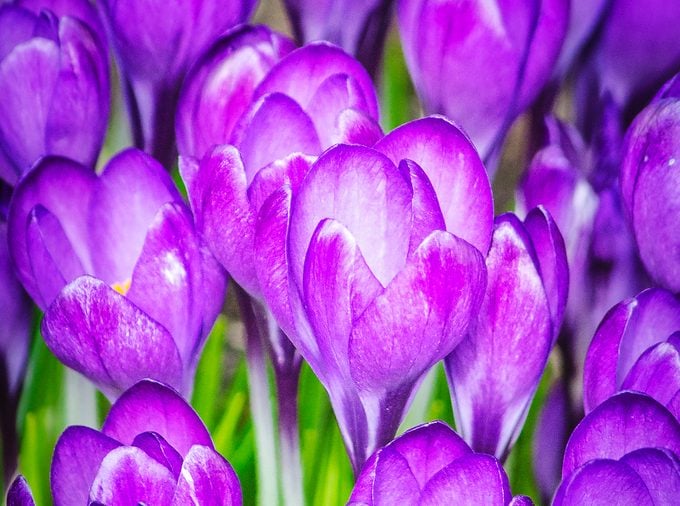
6. Crocus
Varieties include crocus ancyrensis and C. tommasinianus, Zones 3 to 8
In late winter, keep your eyes peeled for purple, yellow and white crocus flowers poking out of a bed of mulch or beneath a snowy blanket. Plant large drifts of corms in fall for stunning color the next season.
Why we love it: Crocuses are known for their strong scent, and help support and attract the first bees and other pollinators emerging.
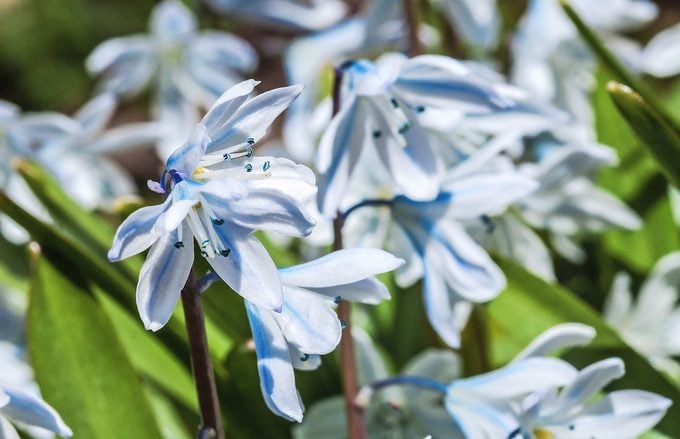
7. Early Scilla
Scilla mischtschenkoana, Zones 4 to 7
If you’re into cool hues, seek out early scilla. This compact green plant sports star-shaped white blossoms striped with blue. They grow in full sun to light shade and spread by offsets and self-seeding. Plant early scilla bulbs in autumn for a spectacular sight come late winter to early spring.
Why we love it: It’s a snap to maintain and often continues to flower annually.
Psst—we love these beautiful blue flowers for every garden.
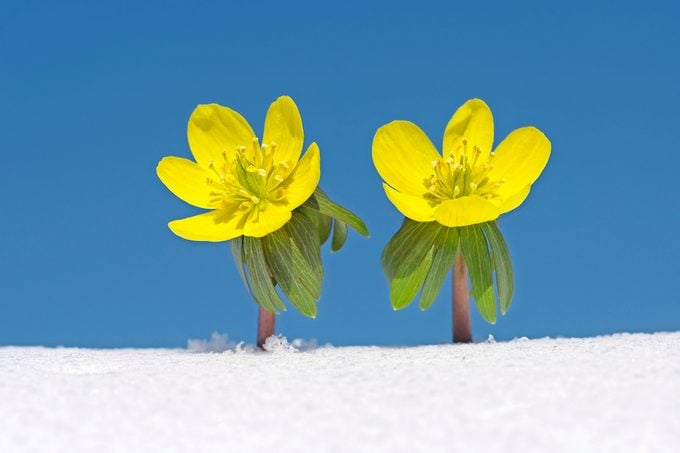
8. Winter Aconite
Eranthis hyemalis, Zones 3 to 7
These small but cheery cup-shaped yellow flowers start to bloom in March, often emerging from a layer of snow. They’re easy to grow in well-draining soil and a colorful way to naturalize a garden.
Why we love it: They are deer resistant and may even grow near black walnut trees.
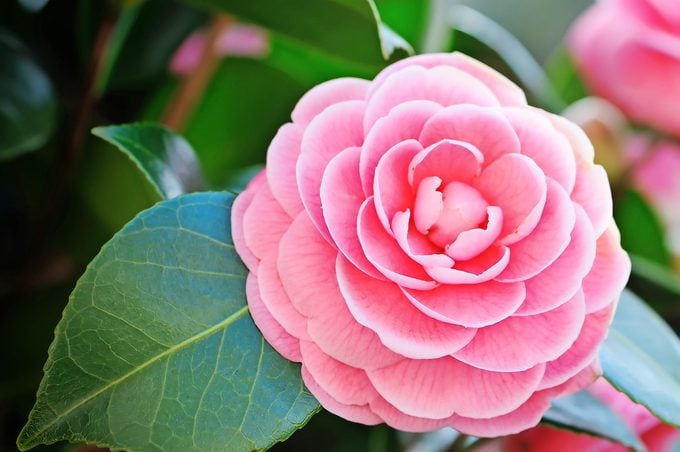
9. Camellia
Camellia spp., Zones 6 to 11
The camellia group includes more than 260 species, some of which flower as soon as October. Look for most blooms to appear in December or January and admire their colors into April. C. japonica is a common species with evergreen foliage and white, pink, red, yellow or lavender flowers. Check out our guide to growing a camellia bush.
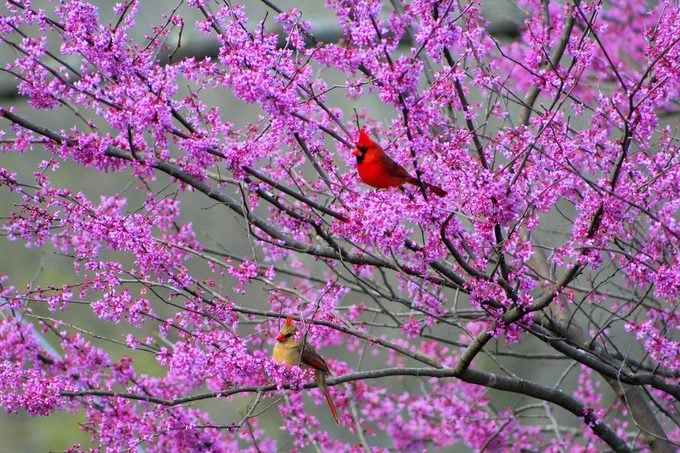
10. Eastern Redbud
Cercis canadensis, Zones 4 to 7
For bare, arching limbs in winter, golden yellow leaves in fall, and colorful pink blooms in early spring, grow an Eastern redbud tree. Birds, bees and butterflies will flock to your backyard.
Why we love it: Songbirds and pollinators love this small tree.
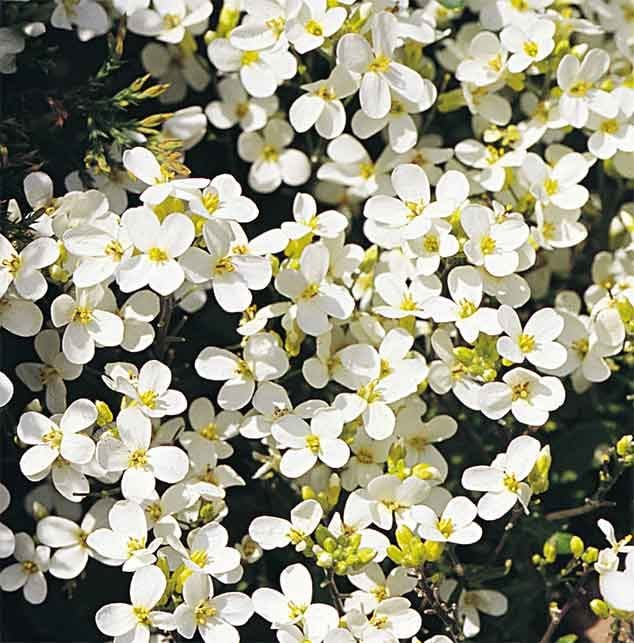
11. Rock Cress
Arabis caucasica, Zones 4 to 7
Nestle rock cress in a sunny spot within a rock garden and dainty white blooms will cascade and spread up to 2 feet. It tolerates drought conditions. Give this short-and-sweet ground cover a haircut after it has finished blooming so it looks tidy for the rest of the growing season.
Why we love it: Fragrant flowers that bloom from April to May attract bees and other beneficial pollinators to your backyard.
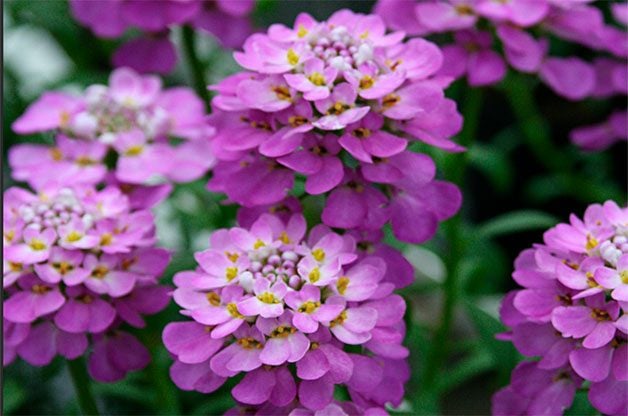
12. Candytuft
Iberis sempervirens, Zones 3 to 9
Just like its name, this plant is a real treat! Get ready for a carpet of pure white or pink blooms, perfect for borders, rock gardens or containers. Candytuft grows best in full sun and well-drained soil.
Why we love it: Flower clusters bloom from March or April right into summer. Dark green evergreen foliage provides interest the rest of the year.
Check out 6 trees with pink and white flowers in spring.
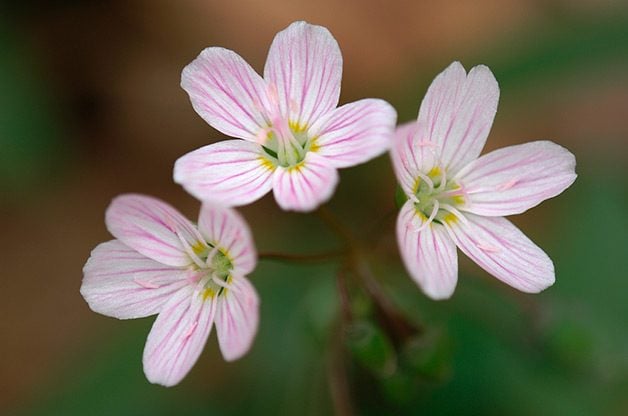
13. Spring Beauty
Claytonia virginica, zones 3 to 8
Come April, white flowers with light or dark pink stripes on 6-inch stems pop up in woodlands. In your yard, grow this pretty perennial in rock gardens or in meadows.
Why we love it: The tubers that grow underground are edible. Most people eat the chestnut-flavored tubers like they do potatoes.
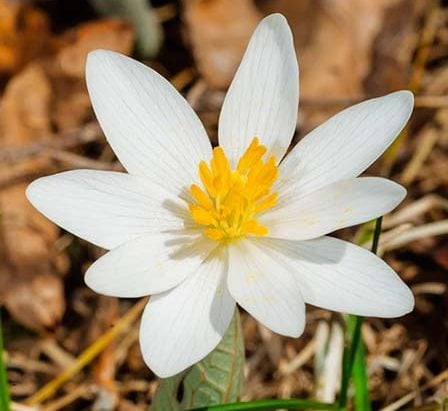
14. Bloodroot
Sanguinaria canadensis, Zones 3 to 9
Bloodroot, a native wildflower, thrives in moist woodlands. Always a welcome sign that warmer weather is on the way, these large, short-lasting, white flowers have yellow centers. The flowers grow from a rhizome. Single stems with one leaf and flower emerge from the structure, slowly growing into a larger clump. This white bloom gets its name from the red liquid that oozes out of the root when it’s cut. In the garden, plant bloodroot in a space where it can naturalize. Pay attention, though! The 2-inch bright white blooms last for only a few days.
Why we love it: Bloodroot craves spring sun and summer shade, so it’s a perfect pick for a woodland garden under deciduous trees. And it’s super easy to grow.
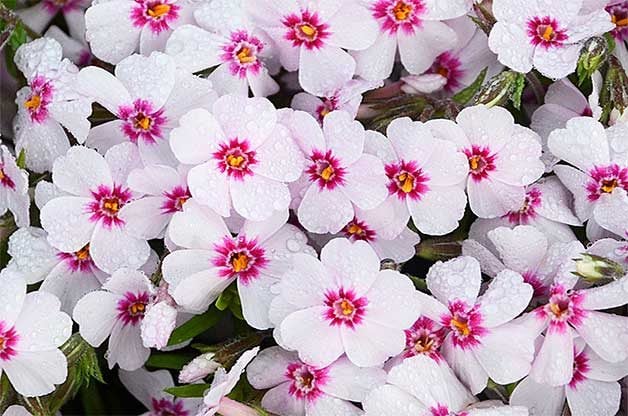
15. Creeping Phlox
Phlox subulata, Zones 3 to 9
Creeping phlox is a smaller, low-growing hearty relative of the familiar fragrant perennial. When the creeping variety bursts into bloom in March, it forms a cascading spread of little early blooming flowers, making it a lovely choice for rock gardens, slopes and flower bed borders. Grow it in full sun and trim back after it blooms.
Why we love it: The showy, star-shaped flowers attract butterflies.
The 411 on Phlox: Creeping phlox (Phlox subulata) also known as moss phlox, is a spreading ground cover. Its close relative, woodland phlox (Phlox divaricata) stands almost a foot taller, blooms a little later and has super fragrant flowers.
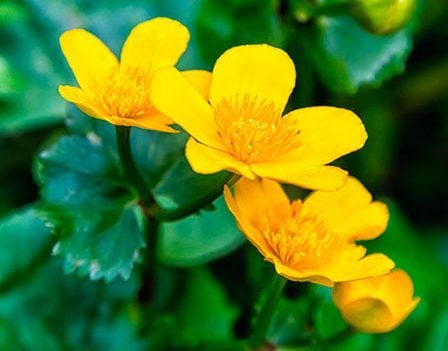
16. Marsh Marigold
Caltha palustris, Zones 3 to 7
Marsh marigold thrives in wet, swampy areas, such as the edge of a pond or water garden. Despite its name, it’s not related to marigolds at all. It’s a member of the buttercup family, which makes sense when you catch a glimpse of the shiny, buttery-yellow flowers.
Why we love it: Deer tend to steer clear of this beauty.
Learn how to plant a rain garden.
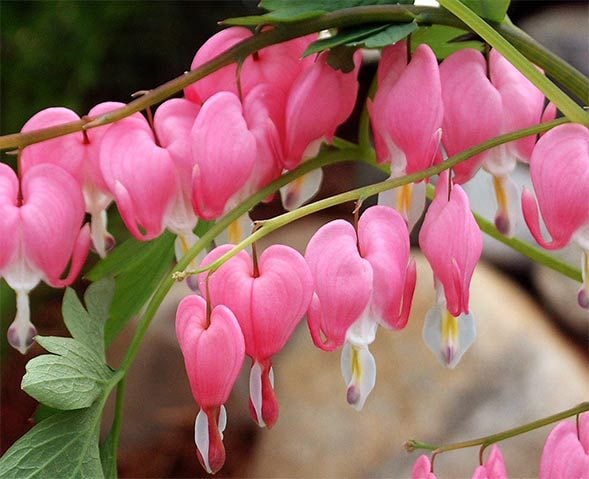
17. Bleeding Heart
Dicentra spectabilis, Zones 3 to 9
Delicate foliage and long-lasting heart-shaped blooms make this a favorite among early blooming flowers. Because it peaks in spring before other plants, grow bleeding heart in the back of a garden bed, so other plants cover the foliage that has died back.
Why we love it: Bleeding heart brings a bright pop of pink to shady spots in your garden. Bonus: It’s a hummingbird and butterfly favorite.
18. Witch Hazel
Hamamelis Japonica, Zones 5 to 8
American witch hazel (H. virginiana) is one of the few plants that blooms in the fall, but the related Japanese witch hazel (H. japonica) takes over in late winter and early spring.
Why we love it: Witch hazel shrubs, with their lovely early blooming flowers, show off when other plants are sleeping. Try a combination of the American and Japanese varieties for a brilliant golden display.
Grow winter interest plants to add color and beauty to your yard.
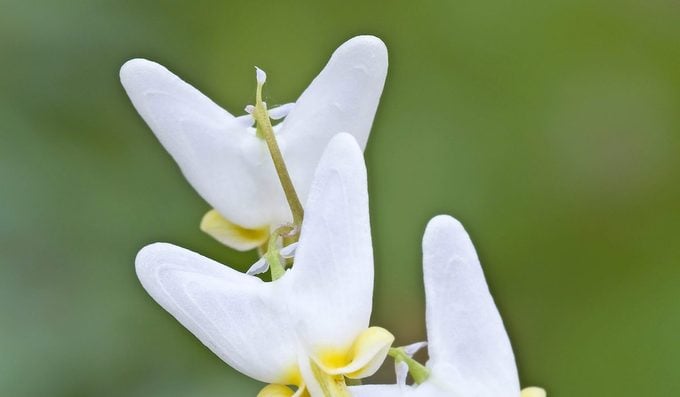
19. Dutchman’s Breeches
Dicentra cucullaria, Zones 3 to 7
This beautiful but short-lasting woodland wildflower is gone by summer, along with its foliage. For a few weeks in spring, though, the delicate flowers hanging off their arching stems are a pure delight.
Why we love it: This relative of bleeding heart (Lamprocapnos spectabilis) is a classic that’s ready to make a comeback in moist, well-draining gardens.
Check out monarch butterfly flowers you should grow.
20. Flowering Quince
Chaenomeles speciosa, Zones 4 to 8
This thorny shrub is an excellent low-maintenance border option. Plant it in full sun to ensure bountiful blossoms as winter finally gives way to warmer days. Quince flowers on old growth, so prune it in spring after it finishes blooming, if needed.
Why we love it: The red, pink or white flowers are followed by small, hard yellow-green fruits that make delicious preserves and jellies.
Check out the top 10 fruit trees for small spaces.
21. Celandine Poppy
Stylophorum diphyllum, Zones 4 to 9
This wildflower, native to the eastern U.S., enjoys rich wet soil and lots of shade. Grow it under trees, where it naturalizes by self-seeding over time.
Why we love it: Flashes of yellow poppies, which spring forth from fuzzy buds, draw attention to shady spots in the garden. The large-lobed foliage is attractive, too.
22. Pasque Flower
Pulsatilla Spp., Zones 4 to 8
European pasque flower (P. vulgaris) usually boasts pale to deep purple petals but some red and white varieties are also available. The bright yellow centers draw the first pollinators of the season. P. patens is a native, found across the country, and has blue-violet flowers.
Why we love it: This rabbit-resistant charmer puts on one of the earliest shows in spring. The blooms are followed by attractive fuzzy seed heads that have a beauty all their own.
Reader-Favorite Early Spring Flowers
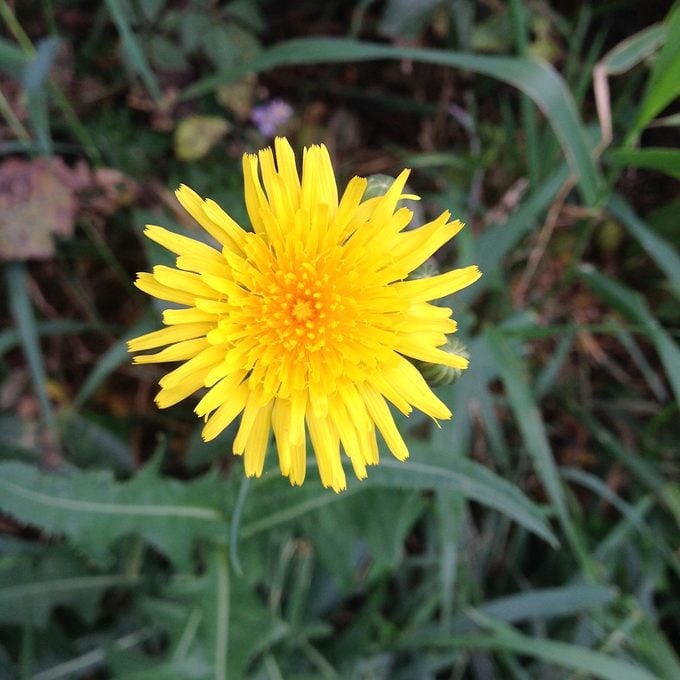
Birds & Blooms readers share the early blooming spring flowers, both inside and outside their gardens, that they most look forward to seeing after a long winter.
“Starting in late March through April in New Hampshire, crocus pokes through the snow and blooms in different shades of white, yellow and purple. The flowers can last for a week and are my favorite early spring blooms.” – Stephen Holland
“I like to see the first dandelions pop out in springtime. They make me smile because they’re so bright after a long and cold winter. They’re like nature’s smiley face!” – Debra Thurman
“Bright yellow forsythia brings back sweet childhood memories for my husband and me.” – Paula Timpson
“I know spring is finally here when I see snowdrops peeking through the snow.” – Marianne Oliver
“With so many to choose from, my favorite spring bloomer would have to be hyacinth. It’s gorgeous and undeniably the most beautifully fragranced.” – Barbara Campbell
“My favorite is pasqueflower. It signals the start of my perennial season here in Massachusetts.” – Diane Gendron

